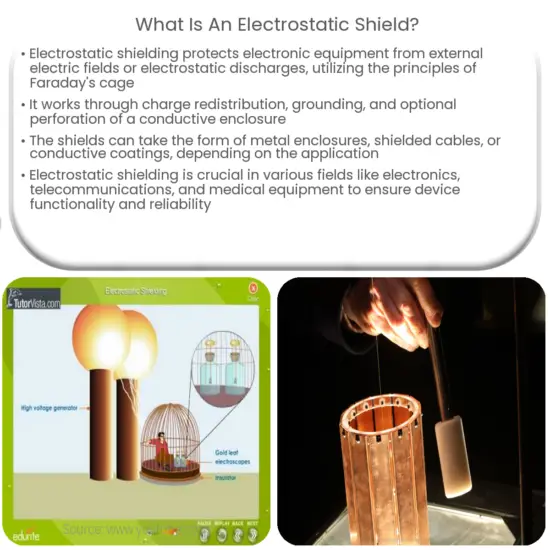As technology advances, the need for safeguarding our electronic devices has become paramount. From https://ramseytest.com to vital information storage, electromagnetic interference can pose a significant threat to our technology. One effective solution to shield these devices is the Faraday cage, an innovation that has proven effective over time. Whether you are concerned about electromagnetic pulses, privacy issues, or want to make sure your gadgets remain functional in adverse conditions, understanding how to build and use a Faraday cage can be an invaluable skill.
This guide will walk you through everything you need to know about Faraday cages, including how they operate, the materials best suited for assembling, and key features to consider when buying or constructing one. With the right knowledge, you can adapt a Faraday cage to meet your specific needs, whether for personal electronics, emergency preparedness, or including for protecting your vehicle. Let’s investigate the essential aspects of Faraday cages and examine how to protect your devices from unwanted interference and vulnerabilities.
Understanding Faraday Enclosures
A Faraday cage is a framework that blocks electric fields and EM radiation from entering its inside. It functions based on the principle of electromagnetic shielding, where a material responds to incoming electric fields by rearranging its charges, thus nullifying out the effect within. This implies that any delicate electronics or information kept within a Faraday enclosure are safeguarded from external electromagnetic disturbance, making them safer from potential threats such as electromagnetic pulses, lightning hits, or illicit access to signals.
The effectiveness of a Faraday enclosure is influenced by several elements, including the material used, the design of the cage, and its grounding. Materials like copper, alu, and steel are commonly used due to their conductivity. A mesh enclosure can deliver substantial safeguards, but solid materials tend to provide enhanced shielding against higher frequencies. When designing or choosing a Faraday enclosure, it is essential to take into account the specific applications and required level of protection to ensure optimal performance.
Faraday enclosures are not just limited to commercial uses; they can be utilized in residential settings for different purposes, such as protecting personal devices from electromagnetic pulses and safeguarding sensitive information. With the growth of intelligent devices and the growing issues around information security and EMF exposure, understanding the characteristics and functions of Faraday cages has turned into more necessary than ever. By purchasing a quality Faraday cage, household and automotive users can noticeably enhance their protection against undesirable electromagnetic threats.
Materials and Dimensions Factors
When selecting a Faraday cage, the materials used play a crucial role in its effectiveness. Alloys such as aluminium, copper, and steels are the top choices due to their excellent conductivity and ability to shield against electromagnetic waves. Aluminium is lightweight and immune to corrosion, making it simple to handle and maintain. Copper offers exceptional conductivity and is incredibly effective for shielding against a broader range of signals. On the other hand, steels is durable and can provide a robust structural base, though it may be more massive and more challenging to work with. Understanding the properties of these metals will help you select the appropriate substance for your Faraday cage to ensure maximum protection.
Size is another crucial consideration when creating or buying a Faraday cage. The size of your cage should be determined by the items you intend to safeguard. It's essential to allow extra room for ventilation and future items, as well as to avoid overcrowded conditions that could diminish the shielding efficacy. For individual electronics, a compact to moderate cage may suffice, while larger setups might be needed for multiple devices or larger appliances. Consideration of both inside and external dimensions will help ensure that your cage serves its purpose without losing accessibility.
Ultimately, the ideal material and dimensions for your Faraday cage will depend on your individual needs and application scenarios. If portability is a priority, you might opt for a smaller, lightweight cage made of aluminum. Conversely, if you plan to store valuable electronics for extended periods, investing in a bigger, more durable steel-made cage could be more beneficial. Balancing these two aspects—material and size—will help you achieve a Faraday cage that not only protects against electromagnetic interference but also meets your practical requirements.
Assessing and Maintenance
Once you have your Faraday cage set up, it is crucial to test its effectiveness in shielding electromagnetic signals. One standard method of testing is to put a active electronic device inside the cage, such as a cell phone or a transmitter, and attempt to pick up signals while the device is operational. If the device does not receive any signals, this is a strong indication that the cage is operating effectively. Alternatively, you can employ a radio frequency (RF) meter to assess the levels of electromagnetic radiation inside and outside the cage, ensuring it adhere to the shielding standards needed for your devices.
Consistent maintenance is crucial for ensuring continued protection. Over time, usage can impact the integrity of the Faraday cage. Inspect for any damages like rust or dents, especially in metal cages. Make sure that door seals and connections are in good condition to maintain a consistent barrier against electromagnetic interference. Cleaning the cage regularly can also help, as dust and debris may hinder its performance. If using a mesh cage, inspect the mesh for any tears or gaps that could compromise shielding effectiveness.

For extended use, proper storage of the Faraday cage is crucial, especially for portable models. Store it in a cool place to avoid moisture damage, and if it is a DIY cage, keep it shielded to avoid physical damage. It's recommended to occasionally test the cage after prolonged storage or changes in environment. This proactive approach will help guarantee that your cage remains effective, giving you confidence that your electronics are secured when required.
